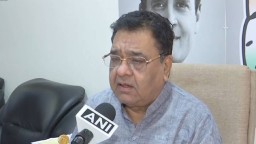Latest News
IS THE INDO-AMERICAN RELATIONSHIP BEING HANDLED WITH INTELLIGENCE?

There has been a lot of hype about the state visit of Indian Prime Minister Narendra Modi to the United States. It is being hailed as a defining step in growing the strategic relationship between the two nations. Modi, beside his unprecedented personal popularity, carried with him the legitimate expectations of a rising India to the US.
The itinerary indicated how much prominence had been accorded to the visit. In the run-up to the visit, defence deals like the purchase of much-delayed Predator armed drones worth $3 billion have been finalized. The US has also agreed to a Transfer of Technology (ToT) of FE-414 engines for India’s Tejas-2 fighters. It appears that the visit covered most bases, from formal and informal events to defense deals and publicity.
However, it is appropriate to look beyond the hype and get down to brass tacks in our examination. There are a few hard choices that, if made, can really foster a long-term and meaningful strategic partnership between the world’s two largest democracies.
American expectations are based on a model of Indian compliance, if not one of an outright patron-client relationship. Despite declining US power, the huge remaining asymmetry between two prospective partners—especially in defence technology and brute hard power—fuels such expectations.
India, on the other hand, is known to be a difficult ally. India fiercely safeguards her strategic autonomy and views herself as practicing a refined version of non-alignment. Indian reticence resulted in giving new customized names to bilateral foundation agreements. “Communications Compatibility and Security Agreement” (COMCASA) had to be tweaked and customized to “Communications Interoperability and Security Memorandum of Agreement” (CISMOA) for India. Such complexities, often dubbed bureaucratese, have prompted experts like Ashley Tellis to highlight the limitations of the promised relationship. India would like to be seen as the ultimate balancer, promoting multipolarity. New Delhi insists on partnership even when it may, in the near- and mid-term, remain the net recipient or beneficiary.
The geopolitical necessities of dealing with an aggressive China have forced India closer to the Quad in order to dissuade her aggressive neighbor. India knows the limitations of such relationships and doesn’t expect boots on the ground. It also realistically appraises the concentricity of Washington-led alliances, like the Five Eyes alliance which complements the Quad, where India is missing.
India, with the Pakistani thorn in her side, was content to accommodate Chinese sensitivities until 2020. Millennials with no memory of the 1962 humiliation were content to remain focused on geo-economics. Economic growth in cooperation with China, as visualized by Deng, seemed to be a fait accompli. Xi Jinping, with his tactical mindset and brash aggressive maneuvers on the Sino-Indian borders, has destroyed that strategic dream. Self-reliance, decoupling and standing up to bullies are now part of the altered discourse in India.
While America may have failed to mold India to its expectations, Xi has certainly pushed India closer to the US by creating a strategic gulf between his country and its Asian neighbor. In the future, while Washington may not have a fully compliant ally, it can certainly bank on a rising India competing with, countering and balancing Beijing.
India has been dependent on Russia for its armaments and munitions since 1971, when Nixon and Kissinger, chaperoned by Rawalpindi brass, were courting China. Russia (and, before it, the USSR) has been a dependable ally to India, but its capacity in a post-Ukraine scenario will be severely circumscribed. More importantly, the myth of Russian ToT stands exposed by the federation’s continued dependency on extra-Russian sources for critical components. The arrangement really amounts to licensed production.
The first things Russia will need to borrow from India are not just “print to design” (knowhow) but also know-why. India has at its disposal probably the largest inventory in a war scenario, whether that is a proxy war with Pakistan to the west or a deployment (already prepared for) to ward off China in the north. Unlike many smaller nations, India has not only displayed the nerve to stand up to China but has undertaken quidpro-quo operations against it, debunking the myth of Chinese invincibility.
Indian crews have the magical ability to quickly master equipment and improvise, something that is known as Indian jugaad. This has been demonstrated by far inferior Gnats in Indian hands taking on Sabre jets and near-obsolescent Centurions creating a graveyard of Patton tanks. Unfortunately, American equipment in Pak hands was on the receiving end. In 1971, Indians once again defied the challenges of riverine terrain in a lightning strike. Medium tanks, T-55s, forded boggy fields and PT-76s floated across mighty rivers with helicopters ferrying infantry across. They actually are devoted to and worship their weapons.
Ukrainian and other conflicts have busted reputation for invincibility of many famed weapon systems, mostly due to inept handling. One is reminded of a horse breeder, who mandated compulsory riding tests for his customers. There can surely be vested interest of US militaryindustrial complex. Sell your equipment, tech to capable users.
Lt Gen K J Singh (Retd) The writer is former Western Army Commander and is currently the State Information Commissioner
SOURCE: FAIR OBSERVER











.png)
.png)

.png)

.jpg)




